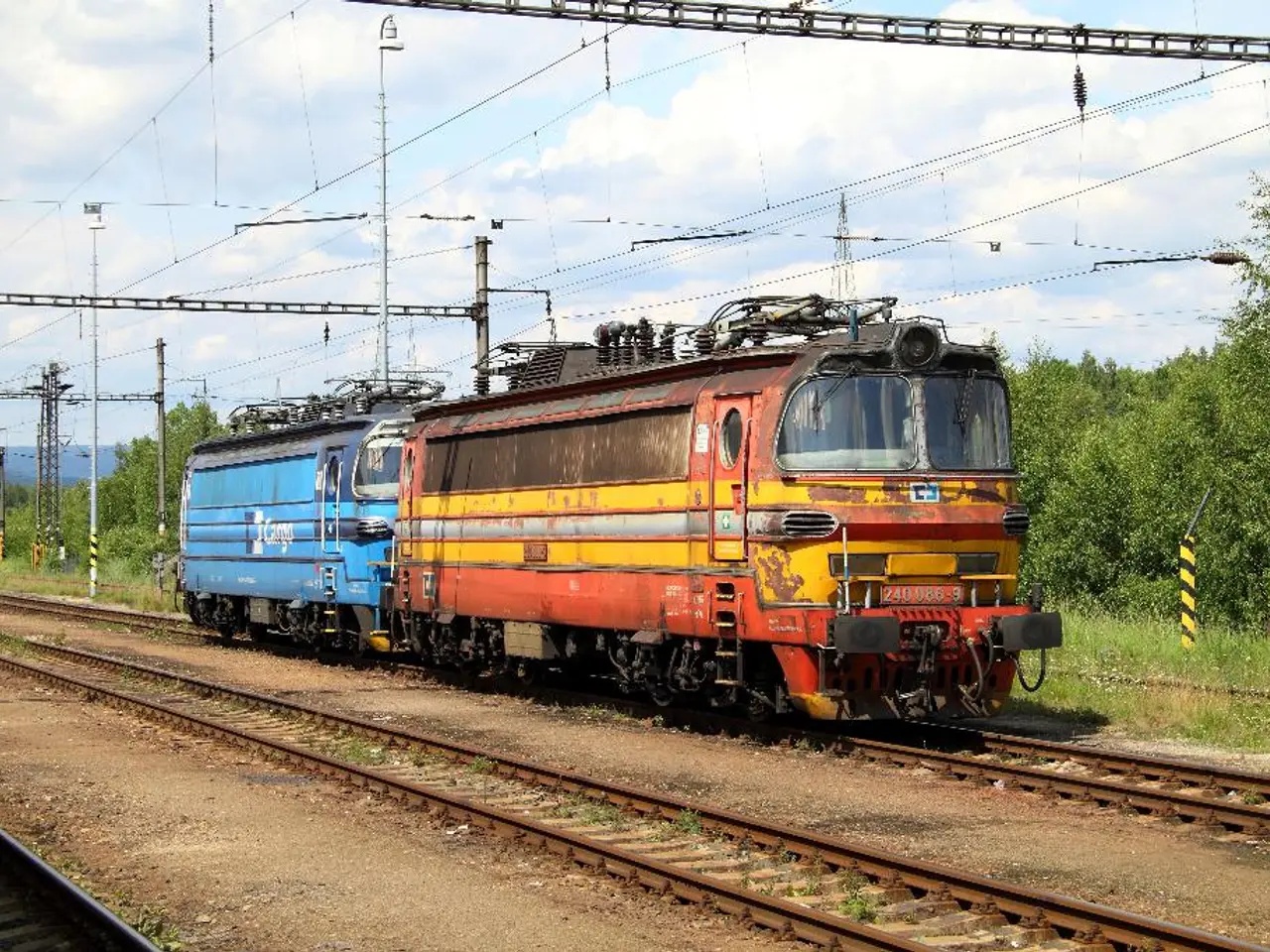Russia potentially utilizing a novel digital currency to circumvent international sanctions
Russia has launched a new ruble-pegged stablecoin called A7A5, designed to bypass international sanctions and facilitate cross-border financial transactions. This cryptocurrency, operated outside mainstream Western-controlled financial systems, is proving to be a potential game-changer in Russia's financial strategy.
A7A5, backed by traditional assets, is harder for Western authorities to monitor compared to dollar-based alternatives. Launched in February this year, A7A5 was created as an alternative payment method for Russian businesses and individuals to evade sanctions. The coin is traded on Grinex, a crypto exchange based in Kyrgyzstan, a country with a crypto-friendly legal environment and less exposure to sanctions and economic pressures.
The sole platform handling A7A5 is Grinex, which has a relatively weak regulatory framework for cryptocurrencies. This regulatory gap facilitates shell companies and informal agent networks to mask illicit ruble flows offshore via multi-hop transfers and front companies disguised as digital finance entities.
A7A5 is pegged to the Russian ruble, making it harder for Western agencies to track compared to dollar-based cryptocurrencies. This feature reduces sanctions enforcement effectiveness, as it allows for more discreet financial transactions. The creation of A7A5 marks a significant step in Russia's efforts to reduce its dependence on major crypto companies that cooperate with Western governments.
The coin was launched by Ilan Shor, a Moldovan businessman and politician, and a Russian state-owned bank, indicating state-level endorsement and strategic intent to create independent financial infrastructure. Investigators have found links between A7A5 and Shor's political activities in Moldova, including shared IP addresses for related websites.
Potential uses for political influence and strategic purposes involve economic sanctions evasion, reducing crypto dependence on Western firms, geo-financial leverage, and undermining the efficacy of sanctions. By developing a ruble-based stablecoin and shifting to Kyrgyz platforms, Russia reduces reliance on crypto companies that cooperate with Western sanctions, preserving sovereignty over financial transactions.
The scale of A7A5’s transactional volume—over $9.3 billion in just four months—illustrates a robust mechanism that weakens the impact of international financial restrictions, helping Russia maintain its economic resilience and geopolitical standing. However, transactions in A7A5 could become problematic if used by sanctioned individuals or entities to reconnect with the global financial system, warned ACAMS's Voloshin.
Elise Thomas, senior investigator at CIR, stated that the blocking of funds by Tether was a "real wake-up call" for Russia, leading them to seek control over their own stablecoin. Russia has faced problems with USDT, the most popular stablecoin, as it is tied to the US dollar and controlled by a company that cooperates with US and European authorities. Before Garantex was shut down, tens of millions of dollars were moved from USDT into A7A5.
Experts say that while A7A5 is not widely used yet, its creation indicates a shift in Russia's financial strategy. A7A5 is backed by deposits in Promsvyazbank, a Russian bank under sanctions for its ties to the government and the military. Ilan Shor and his company have been sanctioned by the UK and the European Union for trying to meddle in Moldova's 2024 presidential election and its referendum on joining the EU while keeping close ties with Moscow.
Multiple international sanctions have been imposed on Moscow since its February 2022 invasion of Ukraine. The creation of A7A5 is part of Russia's ongoing efforts to circumvent these sanctions and maintain its financial independence.
[1] The Guardian [2] CoinDesk [3] Reuters [4] Kyiv Independent
- The launch of A7A5, a ruble-pegged stablecoin operated outside mainstream financial systems, has been a topic of general-news, business, technology, and politics, given its potential role in bypassing international sanctions and facilitating cross-border financial transactions.
- The regulatory gap in Kyrgyzstan where A7A5 is traded allows shell companies and informal agent networks to conceal illicit ruble flows offshore, making it a concern for finance and investigative agencies.
- By creating A7A5, Russia aims to reduce its dependence on major crypto companies that cooperate with Western governments, invest in homegrown technology for financial infrastructure, and bolster its economic resilience and geopolitical standing amidst international sanctions.




